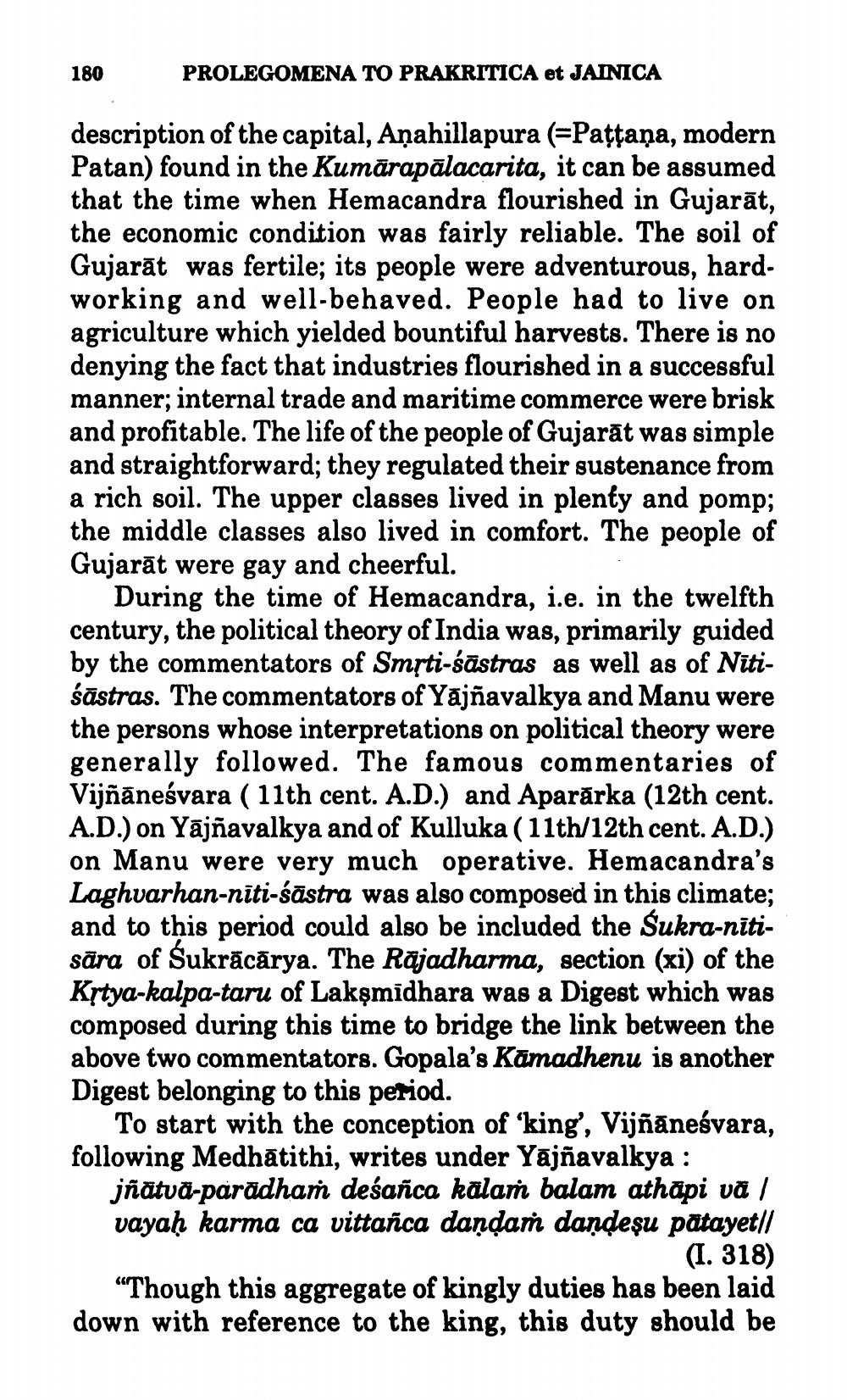________________
180
PROLEGOMENA TO PRAKRITICA et JAINICA
description of the capital, Aṇahillapura (=Pattana, modern Patan) found in the Kumarapalacarita, it can be assumed that the time when Hemacandra flourished in Gujarāt, the economic condition was fairly reliable. The soil of Gujarat was fertile; its people were adventurous, hardworking and well-behaved. People had to live on agriculture which yielded bountiful harvests. There is no denying the fact that industries flourished in a successful manner; internal trade and maritime commerce were brisk and profitable. The life of the people of Gujarat was simple and straightforward; they regulated their sustenance from a rich soil. The upper classes lived in plenty and pomp; the middle classes also lived in comfort. The people of Gujarat were gay and cheerful.
During the time of Hemacandra, i.e. in the twelfth century, the political theory of India was, primarily guided by the commentators of Smṛti-śāstras as well as of Nitiśāstras. The commentators of Yajnavalkya and Manu were the persons whose interpretations on political theory were generally followed. The famous commentaries of Vijñāneśvara (11th cent. A.D.) and Apararka (12th cent. A.D.) on Yajnavalkya and of Kulluka (11th/12th cent. A.D.) on Manu were very much operative. Hemacandra's Laghvarhan-nīti-śāstra was also composed in this climate; and to this period could also be included the Sukra-nītisāra of Sukrācārya. The Rajadharma, section (xi) of the Krtya-kalpa-taru of Laksmidhara was a Digest which was composed during this time to bridge the link between the above two commentators. Gopala's Kamadhenu is another Digest belonging to this period.
To start with the conception of 'king', Vijñāneśvara, following Medhātithi, writes under Yājñavalkya : jñātvā-parādhaṁ deśañca kālam balam athāpi vā | vayaḥ karma ca vittañca dandam danḍeşu patayet// (I. 318)
"Though this aggregate of kingly duties has been laid down with reference to the king, this duty should be




